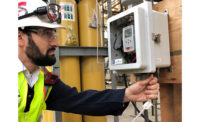Regular plant maintenance is essential, but shutdown turnarounds tend to be complicated and expensive. According to the TA Cook industry research organization, 82% percent of turnarounds do not satisfy performance expectations — about half experience delays, and 80% go over budget. Plant managers need to be keenly aware of the cost and size of the project before bringing a facility offline. What can companies do to better manage the shutdown and turnaround process?
New technology is transforming the way companies manage plant maintenance. Remote assets and wearable devices can be used to enhance safety in the workplace while keeping the process on track. Learn more about how industry 4.0 is changing shutdown turnarounds for the better.
What is Industry 4.0?
Industry 4.0 refers to the incorporation of digital technologies, such as cyber-physical systems (CPS), the internet of things (IoT), industrial internet of things (IIOT), cloud computing, cognitive computing, and artificial intelligence. These technologies and devices are wirelessly connected to the internet to allow real-time reporting and monitoring. They automate certain processes while collecting data on operations to help companies prepare and budget.
Managers can incorporate this data into a single interface that makes it easier to manage multiple maintenance projects or assets at once. This technology can be applied to various industries without impeding operations. They can be an asset to both contract workers and facility managers throughout the process.
How Industry 4.0 can improve shutdown turnarounds
Few tasks are as daunting as closing down a facility. Turnaround can take months, if not years, of planning and researching, as well as potentially hundreds of contract workers for some facilities. Considering the high cost of suspending operations, companies need to find a way to improve efficiency without overlooking critical assets or maintenance requirements. Industry 4.0 can help companies address both of these issues at the same time.
Smart devices that constantly monitor equipment performance can give managers a better idea of the scope of the project. The system will track all assets in need of repairs for a complete maintenance checklist. This data can also help companies perform predictive maintenance. The system will identify potential equipment failures before they occur, so the company can avoid replacing the machine entirely.
New technology offers unsurpassed visibility to help managers make decisions in real time. The turnaround process is often anything but predictable. The project can easily run into delays, which could throw off the company’s entire maintenance timeline. Real-time data analytics lets the company quickly adjust the process as these changes and potential disruptions occur.
Communication is key when bringing a plant offline. These systems can help managers stay connected to their colleagues and business partners, so everyone stays on the same page.
Finally, the system can also generate a report once the turnaround is complete, including an itemized list of all the assets that were repaired, who was involved, and the duration of the shut-off. Companies can use this information to improve the turnaround process. This also helps the company prepare documentation for compliance purposes.
How Industry 4.0 can improve workplace safety
Safety is also a crucial component of the planning process. Around half of all work-related accidents at manufacturing plants occur during planned maintenance outages. If these assets aren’t managed properly, workers and contractors can easily injure themselves during the maintenance process, exposing the company to liabilities.
Industry 4.0 improves worker safety in a variety of ways. Remote tracking devices can be used to locate employees in real time across a wide range of assets and projects. This helps the company keep track of which workers are near the equipment. Automatic sensors and shut-off systems will also alert workers and managers if someone gets too close to a hot piece of equipment, so they don’t accidentally injure themselves in the process.
Remote devices can also be used to monitor the health and wellbeing of employees, especially when entering confined spaces. Wearable devices will identify potential health issues so that the team can begin the rescue process.
Augmented reality (AR) is also making its way into the safety industry. Workers can use AR devices and interfaces while performing complex maintenance tasks. Managers can oversee every step of the process while communicating with the worker in real-time to ensure that they aren’t putting themselves in harm’s way.
Safety managers can also use AR to conduct remote digital walkthroughs of the space before anyone steps inside to ensure that it is safe for human occupation. The system will connect them to various reporting elements, including gas monitors, surveillance equipment, and other safety equipment. This limits the number of workplace accidents so that the worker can focus on the task at hand. Once workers receive the green light from management, the team can safely enter the space and begin work.
How to implement Industry 4.0
Companies looking to improve the turnaround process should consider implementing the latest technology to automate certain processes.
Managers can start by identifying which assets or processes can be automated. These devices should integrate into a facility management system that provides 100 percent visibility. Companies will need to hire and train their workers to use this technology to facilitate real-time reporting.
Once this technology comes online, companies should identify potential safety risks in the current system and address these issues before starting the turnaround process.
Closing a plant may be challenging, but Industry 4.0 has helped companies successfully complete turnarounds without running over budget, neglecting assets, or putting their workers at risk. Automating the data collections process and increasing workplace and employee surveillance can be expensive and time-consuming, but these changes will pay off down the line. It’s every company’s responsibility to make sure their workers and contractors are safe when conducting maintenance and making updates and repairs.



